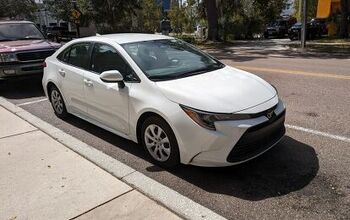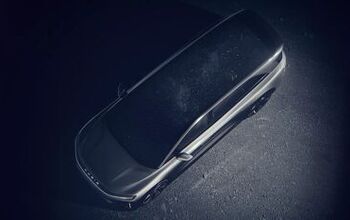BYD Blasted For Reverse Engineering, Labor Practices, Expansion
Typically, the only reports on China’s BYD involve booming Chinese sales, unproven future products, and Warren Buffett’s investment in the battery and auto manufacturing conglomerate. But these don’t tell the whole story of how BYD has emerged from relative obscurity to publicly announcing that it intends to challenge Toyota to become the world’s top automaker by 2018. Chinese outlet Caixin [via GreenCarReports] attempts to shed some light on BYD and what it takes to rise to the top of China’s massive manufacturing industry, in a piece titled “How Manufacturing’s Mockingbird Sings.” The piece details BYD’s reliance on reverse engineering, the practice of stripping down competitor automobiles and components and copying them, and its extreme (even by Chinese standards) dependence on cheap labor.
According to the report, BYD has hundreds of staff who focus on global copyright law, to facilitate the kind of copying that would almost certainly be illegal outside of China, as BYD gets ready to start selling vehicles abroad. One of China’s best-selling cars, the BYD F3, is so similar to Toyota’s Corolla that many buyers pay an extra fee to have Toyota badges affixed, making the F3 nearly indistinguishable from the real thing. According to one expert quoted in the story, Toyota is likely preparing a suit against BYD.
But copying is not limited to vehicle designs and styling:
BYD delights and frightens suppliers at the same time. Many have discovered that BYD typically makes one or two serious, large orders of models, materials, or components but never orders again. That’s because it just starts making whatever it bought.
By copying designs, BYD is able to build more of its components in-house at a time when major automakers are increasingly outsourcing component design and production to independent suppliers. It’s able to vertically integrate (relatively) profitably because of its reliance on cheap manual labor. For example, its batteries are built by hand, requiring a columnar (rather than boxed) shape, and resulting in far cheaper build costs despite waste rates of 20-30 percent. Per-capita productivity at BYD’s battery plants is reportedly half that of more automated Chinese competitors, but the firm is still able to keep costs lower. This strategy is carried over to the auto business, where the sheer volume of employees (BYD reportedly ended 2009 with 140k workers) is able to build cars cheaper than more automated factories. And where BYD does automate, it often builds equipment itself to keep costs low.
BYD’s defense of its practices: first, the company claims that its Japanese competitors relied heavily on reverse-engineering in their rise to dominance (an argument that conveniently chooses not to distinguish between studying competitors and blatantly copying them without a license). Moreover, the firm say it has six new models coming out, which it claims don’t resemble anyone else’s designs. We will have to see about that one, as another Caixin story details a few of the challenges BYD is facing as it seeks to make its electric vehicles reality (one of which is that the firm is rumored to be building a total of two of its much-vaunted but poor-selling hybrid vehicles per day and that the E6 is still prototype-only). Meanwhile, BYD has itself become one of the most active patent-filing companies in China. All of these questionable practices are easy to justify when you’re coming up from nothing, but transitioning from tear-up-the-rule-book upstart to a status-quo player is never easy.
More by Edward Niedermeyer
Latest Car Reviews
Read moreLatest Product Reviews
Read moreRecent Comments
- Jeff JMII--If I did not get my Maverick my next choice was a Santa Cruz. They are different but then they are both compact pickups the only real compact pickups on the market. I am glad to hear that the Santa Cruz will have knobs and buttons on it for 2025 it would be good if they offered a hybrid as well. When I looked at both trucks it was less about brand loyalty and more about price, size, and features. I have owned 2 gm made trucks in the past and liked both but gm does not make a true compact truck and neither does Ram, Toyota, or Nissan. The Maverick was the only Ford product that I wanted. If I wanted a larger truck I would have kept either my 99 S-10 extended cab with a 2.2 I-4 5 speed or my 08 Isuzu I-370 4 x 4 with the 3.7 I-5, tow package, heated leather seats, and other niceties and it road like a luxury vehicle. I believe the demand is there for other manufacturers to make compact pickups. The proposed hybrid Toyota Stout would be a great truck. Subaru has experience making small trucks and they could make a very competitive compact truck and Subaru has a great all wheel drive system. Chevy has a great compact pickup offered in South America called the Montana which gm could be made in North America and offered in the US and Canada. Ram has a great little compact truck offered in South America as well.
- Groza George I don’t care about GM’s anything. They have not had anything of interest or of reasonable quality in a generation and now solely stay on business to provide UAW retirement while they slowly move production to Mexico.
- Arthur Dailey We have a lease coming due in October and no intention of buying the vehicle when the lease is up.Trying to decide on a replacement vehicle our preferences are the Maverick, Subaru Forester and Mazda CX-5 or CX-30.Unfortunately both the Maverick and Subaru are thin on the ground. Would prefer a Maverick with the hybrid, but the wife has 2 'must haves' those being heated seats and blind spot monitoring. That requires a factory order on the Maverick bringing Canadian price in the mid $40k range, and a delivery time of TBD. For the Subaru it looks like we would have to go up 2 trim levels to get those and that also puts it into the mid $40k range.Therefore are contemplating take another 2 or 3 year lease. Hoping that vehicle supply and prices stabilize and purchasing a hybrid or electric when that lease expires. By then we will both be retired, so that vehicle could be a 'forever car'. And an increased 'carbon tax' just kicked in this week in most of Canada. Prices are currently $1.72 per litre. Which according to my rough calculations is approximately $5.00 per gallon in US currency.Any recommendations would be welcomed.
- Eric Wait! They're moving? Mexico??!!
- GrumpyOldMan All modern road vehicles have tachometers in RPM X 1000. I've often wondered if that is a nanny-state regulation to prevent drivers from confusing it with the speedometer. If so, the Ford retro gauges would appear to be illegal.

































Comments
Join the conversation
"While I agree the Chinese are about ‘zero’ on the creativity scale" I posted this earlier: http://en.wikipedia.org/wiki/List_of_Chinese_inventions The Chinese basically stopped inventing when it sank into a century of chaos after the collapse of the Qing dynasty. They only started to catch up after Mao died. They have some distance to cover on the basic science front before they can come up practical inventions.
Yeah, it's fashionable to twist what's reported and sing the tune of bashing Chinese automakers. But let's clear some air and see what the REAL report from Caixin is: 1. "According to the report, BYD has hundreds of staff who focus on global copyright law". Actually I'd be surprised if TTAC can actually find a volume international automaker that would have a staff of less than 'hundreds' focusing on global copyright law; 2. According to the report from Caixin, BYD "reverse engineer[s] the luxury car's [a Merc. S300] electronic control system". Com'on, can anyone show me where can I find the electronic control system of a Merc. in a lowly BYD. LOL. I guess, the expensive (and difficult to reverse engineer) part is the software, whether it's in the ECM, ABS, VSA or those that integrates the operation of the vehicle, not those hardware that one can see, measure and duplicate.